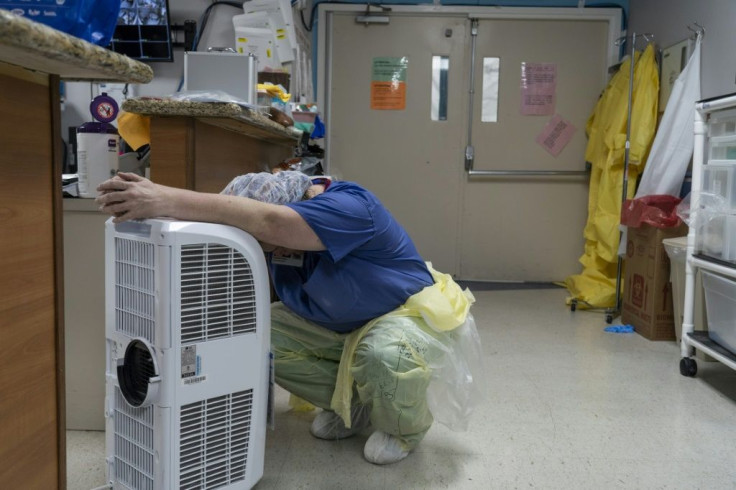COVID-19 In The US: Death Toll, Cases May Surge For Rest Of 2020
KEY POINTS
- COVID-19 infections have spiked in the Midwest and South, spurred by governments and populations resistant to public safety measures
- Hospitals already pushed to the brink are unlikely to get any relief in November and December as the winter months push people indoors
- A Pfizer vaccine has delivered promising results in the latest clinical trial, but approval and distribution complexities mean it won't have widespread availability until late 2021
As a resurgent COVID-19 engulfs the South and Midwest, health officials are warning that the worse may be yet to come.
The U.S. has reported 100,000 new coronavirus infections over seven consecutive days. The infection rate could potentially double.
"It will not surprise me if in the next weeks we see over 200,000 new cases a day," Michael Osterholm, director of the Center for Infectious Disease Research and Policy at the University of Minnesota, told CNN on Monday.
More than 1,100 deaths were reported Friday and the death toll is approaching 240,000, according to Johns Hopkins University. Daily deaths have been trending higher in recent weeks.
Despite promising results from Pfizer’s vaccine trials, distribution won’t ramp up until at least mid-2021. As hospitals reach capacity and some regions eschew safety measures, the weeks leading up the new year could see an uptick in cases and deaths.
COVID-19 levels are spiking in many states, but particularly those in the Midwest and South that failed to implement safety measures such as lockdowns and mask mandates. North Dakota, currently leading the pack, recently announced it would be allowing COVID-19 positive nurses to continue working.
North Dakota Gov. Doug Burgum would not, however, be implementing any lockdowns or stay-at-home orders. He instead called on citizens to stop the virus with “personal responsibility” and “compassion.”

“All the stars are aligned in the wrong place as you go into the fall and winter season, with people congregating at home indoors,” Dr. Anthony Fauci warned in a Washington Post interview. “You could not possibly be positioned more poorly.”
There are political lines to new lines, as well. Resistant rhetoric aligns with evidence suggesting that the areas experiencing this new wave of infections are doing so because of public policy rather than random chance: A tally by the Associated Press found that 93% of the counties hit hardest voted for Donald Trump, who has systematically downplayed the severity of the pandemic and told supporters it would go away on its own.
Trump has made a wide variety of false claims about the virus, perhaps the most damaging being his, and in turn his party’s, embrace of herd immunity as a solution. Kristian Andersen, an immunologist at the Scripps Research Institute, told Nature that this strategy is essentially “surrendering to the virus” and might not even speed up societal recovery.
“We have never successfully been able to do it before, and it will lead to unacceptable and unnecessary untold human death and suffering,” he said.
That may be just what awaits counties unwilling to take the steps necessary to stop the virus’ march. Liberal states and counties, many of which were hit early by the virus due to population density, aren’t seeing the same sharp spike in cases. Governments that take the virus seriously and experienced populations that understand the importance of public safety measures seem to have spared them the worst of a second wave despite the inherent disadvantage cities have in viral transmission.
Some people are looking hopefully toward promising results from a Pfizer vaccine trial, but production and distribution complexities mean that even with rushed delivery the majority of Americans won’t be able to receive the vaccine easily until late 2021, NBC News reports.
There are some bright spots: Critical groups like medical personnel and vulnerable populations will receive the vaccine earlier than that. But for the states running out of room in intensive care units right now, that’s cold comfort.
© Copyright IBTimes 2025. All rights reserved.



















